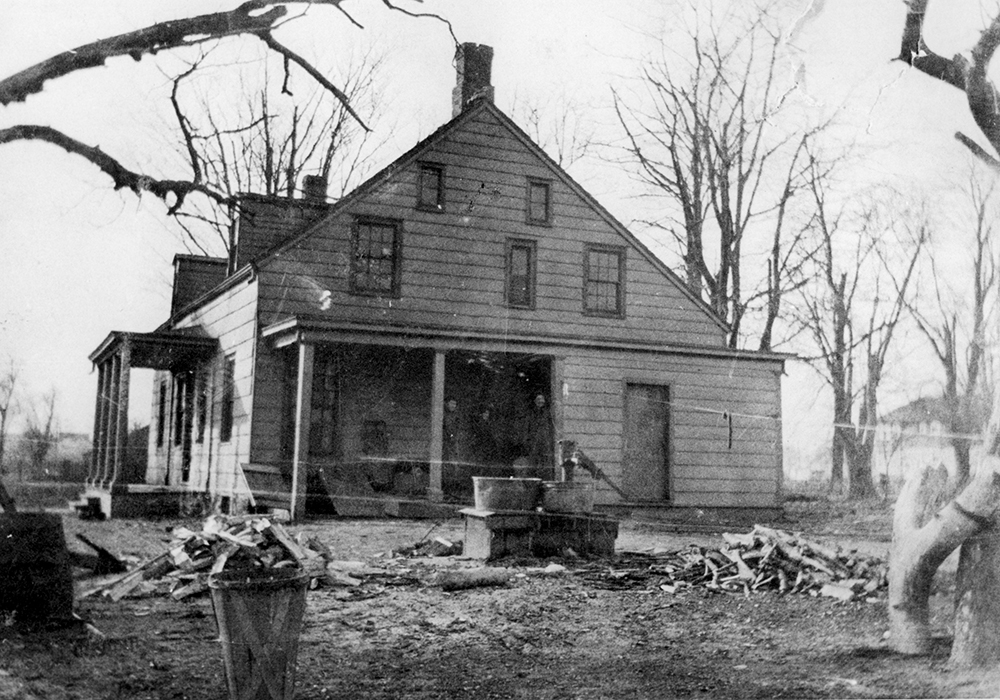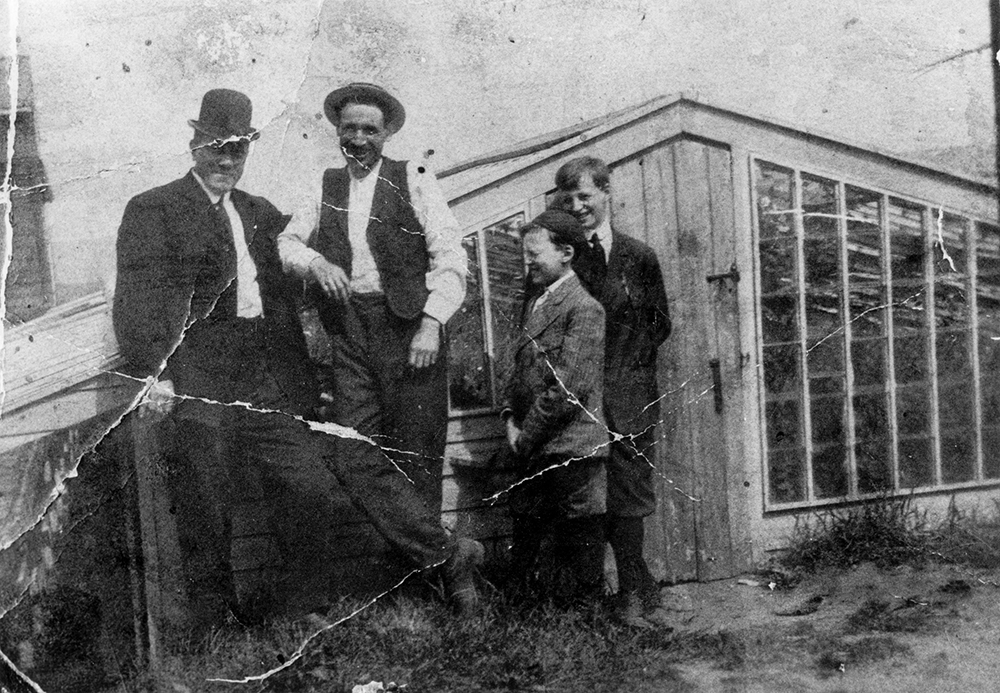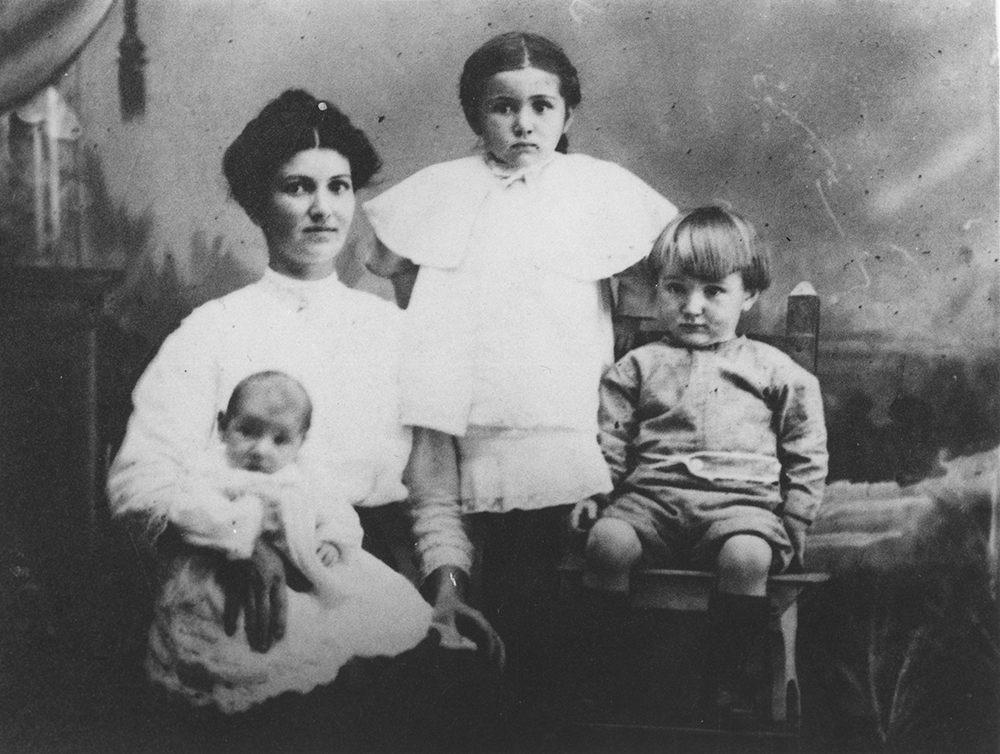Revolutionary Soldiers Carved Names on Beams of This Now-Gone Dutch Farm in Flatlands
An old Dutch farm that once stood in Flatlands is gone but not forgotten. A Brownstoner reader sent in never-before-published family photos and stories of life on the farm circa 1900, when his great-grandfather lived there. The commenter, who currently lives in Park Slope, wrote that his, “great grandfather, Robert Buckley, was a ‘market man’…

An old Dutch farm that once stood in Flatlands is gone but not forgotten. A Brownstoner reader sent in never-before-published family photos and stories of life on the farm circa 1900, when his great-grandfather lived there.
The commenter, who currently lives in Park Slope, wrote that his, “great grandfather, Robert Buckley, was a ‘market man’ tenant farmer for the Kouwenhovens of Flatbush in the late 1800s until the early 1920s. He would take his horse-drawn wagon full of produce fresh from the farm at Kings Highway to the Wallabout [Market].”
This produce consisted largely of potatoes, cabbage, beets and celery. As well, the farm contained various livestock, including a dairy cow named Bossy.
All the veggies were grown on the Kouwenhoven’s 10-acre farm, which also contained various outbuildings, including a large Dutch barn which, according to Buckley’s relatives, housed Revolutionary soldiers — who carved their names into the beams.

Buckley also ran the Kouwenhoven’s greenhouses and hot houses, and he raised 13 children in the Kouwenhoven-owned farm house, which was located at Kings Highway and 54th Street (formerly Kouwenhoven Lane). It was torn down in 1925 when Kings Highway was widened so as to allow for the expansion of the street grid.
According to the commenter, “The property was originally going to be sold to St. John’s College (today’s St. John’s University) on which they were going to built a new campus. But the deal fell through.” St. John’s University was built in Queens, and the farmhouse was razed, eventually replaced with the garden apartments which stand there today.
“This is the only known image of my great grandfather (Robert Buckley in vest and straw hat) with the Kouwenhovens (elder Kouwenhoven in suit and derby; two Kouwenhoven sons in suits). They are standing in front of one of the many ‘hot houses’ which Robert Buckley maintained.”

[Photos via Buckley Family Archive. Not to be reproduced without permission]
Related Stories
Flatlands: Of Sunny Days, Sea Breezes, Knights in Armor and Chewing Gum
Brooklyn Couple Restores 1813 Saugerties Farmhouse With Views of the Catskill Mountains
The Wallabout Market and the Neighborhood’s Name Origins
Email tips@brownstoner.com with further comments, questions or tips. Follow Brownstoner on Twitter and Instagram, and like us on Facebook.
[sc:daily-email-signup ]








Very interesting, thanks! I wonder what happened to the Kouwenhovens after they sold their farm.
Hi – thanks for responding, its pretty interesting stuff.
They aren’t listed in the article, I wonder now if they like your family were not owners of the property but tenant farmers. I will try to do a little more research on it.
Thanks Barbara! Amazingly, one of the 13 Buckley children who were born on the farm (my Aunt Eileen) is still alive, 94 years old living in FLA., and only recently began to decline in health, unfortunately. I visited her a few years back and corresponded frequently with her via snail mail. I cherish the letters she wrote and the conversations we had. Brings the past to life in a very personal way.
This is so cool. Thank you for sharing the story of your family, Mr. Buckley! The photos are fascinating, but it’s the personal story that really makes them come alive.
Hi, I’m the G Grandson. Yes, the family stay on in Brooklyn but not in Flatlands. My G Grandfather went on to work for Brooklyn Edison; my Grandfather went to work for one of the grocers that they sold vegetables to at the Wallabout Market. The belonged to the Mirabitos, from Park Slope (although the store was in Prospwct Heights at Underhill and Steeling). My grandfather wound up marrying the Mirabito’s eldest daughter (an event that did not go over too well in the Mirabito household due to my grandfather’s Irish heritage.). My grandfather worked in grocery stores the rest of his life in Park Slope until his retirement in the early 1970’s.
You are welcomed! And there are many more stories that the limited space here would not permit.
Thank you! Yes she was ? She lived a wonderful and storyed life.
Oops, here’s the article:
Brooklyn Daily Eagle
SUNDAY MORNING, MARCH 5, 1911
TO SELL KOUWENHOVEN FARM.
Auction of Property in Proceedings by Midwood Park Co. – Night Sale of Ridgewood Lots.
The sale is to take place, in foreclosure proceedings, on Monday, at the Real Estate Auction Room in Montague Street, of a large tract of land in the former town of Flatlands, now the Thirty-second Ward. It was the former Cornelius B. Kouwenhoven farm and was one of the properties exploited by Michael E. McLaughlin, when he was cutting a wide swath as a real estate operator on the outlying sections of this borough. The sale will be conducted by William H. Smith, auctioneer, under the direction of John A. Fitzgerald, referee.
The proceedings are brought by the Midwood Park Company, in which Mirabeau L. Towns is largely interested, against Mrs. Bertha G. McLaughlin Baker, a sister of M. E. McLaughlin, the Kouwenhoven Reality and Improvement Company, the Title Guarantee and Trust Company as trustee, the Metropolitan Trust Company and a number of other defendants, among whom are Frank Balley, James P. Orr, A. V. Suydam, A. V. Kouwenhoven, Robert Buckley, Raffaelo Carazzo, Edward Bailey and Andrew Herd. The property begins at Avenue E and Hunterfly road, or Kouwenhoven Place, extended to the Manhattan Beach Railroad; thence along East Fifty-sixth Street to the old Bedford creek and back to Hunterfly road.
Certain sections are exempt from the sale. Mr. Towns bought the property in 1901, including 220 acres, and put it in the hands of M. E. McLaughlin for sale in 1905, at $2,200 an acre. He had paid $75,000 in cash and $160,00 in mortgages. An option was given to Mrs. Baker and A. T. Herd in October, 1905, to purchase it for $126,316 cash and mortgages of $358,899. In foreclosure proceedings, there was brought to light a trust mortgage to secure $202,000 in bonds, which was canceled by Justice Kelly, who characterized it as representing an “illegal concealed profit.” The sale is expected to arouse much interest.
Hi,
I am the great grandson who provided the info for the article. It’s facinating to meet someone whose ancestors may have been neighbors. Here is an article clipping from the Brooklyn Eagle re the farmland and a real estate dispute. My great grandfather is named as are all of the other tenant farmers. Is your family one of these? BTW: we have other pics of the farm, I just chose a few. And my family also farmed some of the other families’ land through the years in addition to their own.
CB